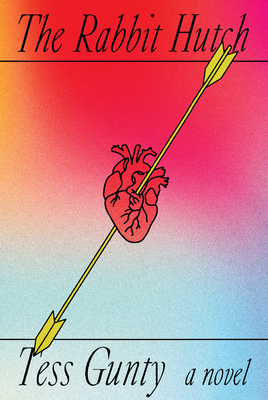The Rabbit Hutch, by Tess Gunty

It’s very rare that I don’t finish a book I start — there’s only been one I didn’t finish in 2022, and that’s mainly because it was essentially three novellas in one volume and I decided it was OK to read only the first two. I almost didn’t finish The Rabbit Hutch, but ultimately I decided to finish it, and I’m not sorry I did.
The concept sounded intriguing, which is why I picked up the book in the first place. Four young adults recently aged out of the foster care system are sharing an apartment in a low-rent building in a dying middle-American town. The novel culminates in an act of violence; we know from the beginning that it’s going to happen, but what exactly happens and why unfolds throughout the pages. At the centre of the story is Blandine, the only girl in the apartment, a brilliant, troubled young woman who is obsessed with the lives and legends of female mystics, and longs for an ecstatic experience such as the saints claimed to have experienced. Her desire for mystical transformation is at odds with the grim realities of her everyday life and the setting in which she lives.
This is, in itself, an interesting enough story, and quite strong enough to hold up the novel. Where it gets iffy is in the author’s decision to focus not just on the stories of this central quartet, but also to write from the point of view of several other people who live in the same apartment building, or whose lives intersect with theirs in some way. I love the idea of this — the classic concept of telling a story from the point of view of many different people in a community, but with the twist that there is no real community here; these people are so isolated by the bleak landscape of poverty in capitalist small-town America that they are like separate planets orbiting the warmth-less sun of the apartment building. It’s a good idea, but I think the execution is uneven; some of the stories are linked to the others either plot-wise or thematically, while others seem to be off in their own cul-de-sac — for this reader, more of a distraction than an enrichment to the central story.
That’s why I almost gave up partway through — too many pages spent on subplots that didn’t interest me and didn’t seem to go anywhere, and while the writing is often beautiful, there’s also some of what I would consider over-writing — long passages of dialogue where a character speaks for three or four pages without stopping, for example. But there was something intriguing in it, so I stayed with is, and it paid off as I got more engaged in the second half of the book and found the ending very satisfying and even a little bit beautiful.



